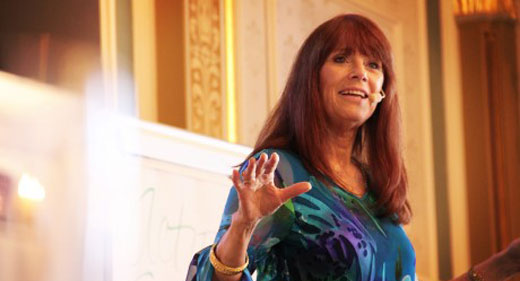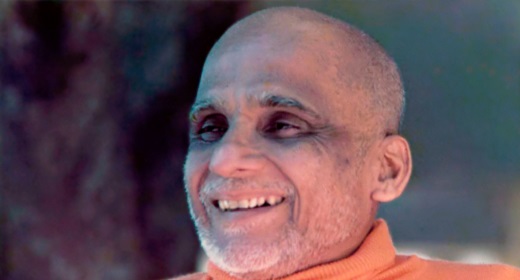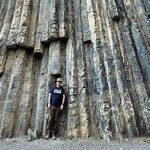by Carl Jung: But the shadow is not all that becomes manifest in emotional disturbance; and it is not sufficient to explain why a man has the rather definite feeling that “he is not himself” or that “he is beside himself.”  There is at such times a peculiar strangeness about a man, which we positively dislike to attribute to him in our ordinary thought of him. Therefore, we say, “I did not recognize him any more,” “he forgot himself,” or “he did not know himself any longer.” Such colloquial expressions clearly formulate a peculiar strangeness or alienation. “Alien” is the French word for insane, and we freely use the word “mad” or angry. As a matter of f act, emotions are coupled with a greater or smaller loss of consciousness, and with a narrowing down of the mind to a remarkable single-mindedness, not to say imbecility. When the storm has blown over, and the former self has appeared again, we prefer to think that the strange presence has disappeared altogether, we hope that the whole thing has not been true.
There is at such times a peculiar strangeness about a man, which we positively dislike to attribute to him in our ordinary thought of him. Therefore, we say, “I did not recognize him any more,” “he forgot himself,” or “he did not know himself any longer.” Such colloquial expressions clearly formulate a peculiar strangeness or alienation. “Alien” is the French word for insane, and we freely use the word “mad” or angry. As a matter of f act, emotions are coupled with a greater or smaller loss of consciousness, and with a narrowing down of the mind to a remarkable single-mindedness, not to say imbecility. When the storm has blown over, and the former self has appeared again, we prefer to think that the strange presence has disappeared altogether, we hope that the whole thing has not been true.
Yet nothing of this kind really disappears. It merely returns to the unconscious, where it awaits its next opportunity. For a keen eye, even, it does not disappear completely. Its influence is still there, less obvious, yet more subtle and cunning.
The strangeness is due to the emergence of a different character-one that we hesitate to ascribe to the ego personality. This formulation of the matter sounds as if it pretended to be new or unexpected. But there is actually nothing new about it. Practically everybody knows it. Do we not always expect something different behind our first impressions of people? Do we not say, “Wait, until you know him better”? Or a wife says, “You have not been married to him for twenty years.” Are we quite sure of ourselves? Are we absolutely certain about our own character, should we find ourselves in a tight corner?
If people are honest with themselves they must admit a certain fear of something that may overcome them. Even saints, or rather just the saints, have their specific devils, and even if they fight them successfully, it is often a close call. Otherwise saintliness would be cheap.
“Strangeness” is, of course, a relative term. One should probably say “relatively strange,”. since it usually depends upon circumstances whether we can draw a favourable picture of ourselves or not. Certain people may never have an inkling of another side, either because circumstances prevented their seeing it or because they themselves were too unconscious and too unreflective to realize it.
This rather cursory description of two groups of contents that make up personalities in the unconscious-the anima (or animus) and the shadow-would be inadequate, if I did not emphasize the fact that, in a man’s case, the anima has a definitely feminine and the shadow an equally definite masculine character. It may strike the reader that my description of the shadow does not markedly differ from my picture of the anima. This is due to the fact that I have spoken only of the immediate and superficial aspects of these figures. Particularly the description of the anima is most incomplete. In the following essays, the reader will find a fuller demonstration of the anima’s nature.
If we compare a number of emotional events, we can easily see that the same character reappears in every one of them. For this reason we can attribute continuity to the unconscious personality, and ascribe to it the emotional intrusions. This point of view is at bottom nothing but an imitation, or repetition, of the way in which primitive man comes to the conclusion that there are such things as witches and ghosts. But he is satisfied with the general assertion that witches and ghosts exist, and does not try to specify their nature. The psychological procedure of which I speak is an attempt to reconstruct an individual character. It is not only of theoretical interest, in certain cases, but of great practical importance. Patients often suffer so much from intrusions of the unconscious that it helps them considerably to know their opponent “personally.”
It is not always a laborious process to reconstruct the anima. Sometimes she appears already personified in dreams and other products of unconscious activity. We also find her as a classical figure in prose fiction; for instance, in books by Haggard,’ Benoit,’ Sloane, and others. These authors have fully succeeded in reconstructing the collective picture of the anima. They are clearly dealing with one and the same mythological and transcendental figure, yet with individual variations. An element of the supernatural always adheres to the anima. This must be so, since she is an entity living almost entirely in the “other world” of the unconscious.
Although the anima is a reconstruction and a hypothesis, the idea explains for us many tragic or puzzling love affairs and their amazing reversals. As long as a man is unconscious of his anima she is frequently projected upon a real woman, and the man’s fantasy equips her with all the fascinating qualities peculiar to the anima. Her moral range is rather wide: she embraces the degraded woman and the femme inspiratrice, Faust’s Gretchen, and the Virgin. Edouard Schure has given us an almost schematic description of the anima, but he had to present her as two figures, since he could not fit all the paradoxes into one person. Charles Kingsley’s Hypatia describes a similar case.
The figure of the animus, the man in the woman, is equally paradoxical. The best literary description I have come across is that by Ronald Frazer. It is a curious fact that no woman of talent has succeeded in producing an adequate picture. It may be that a woman’s animus writes her novels for her, and thus escapes portrayal. But Frazer has produced a clever and accurate picture of the animus, running the whole gamut from utter banality to supreme mystery.
Animus and anima are natural “archetypes,” primordial figures of the unconscious, and have given rise to the mythological gods and goddesses. It is, therefore, rather a futile undertaking to disinfect Olympus with rational enlightenment. The gods are not there; they are ensconced in the shadows of the unconscious, where we cannot uproot them. Whenever a projection of these archetypes is destroyed by rational criticism, the disembodied image returns to its origin, the archetype. There it awaits a new opportunity to project itself. Rationalism is certainly called for in many pursuits, but as soon as it leaves the scientific laboratory to trespass in the domains of life it always expects the things that never happen. Reason has never ruled life, and presumably it never will. The questions of life and fate are too often-and perhaps for the largest part-decided by the powers of the unconscious.
To the psychological beginner, animus and anima are certainly nothing but elusive wraiths. It needs a good deal of specific experience to recognize and understand their subtle but powerful activity. But when the student has acquired the necessary powers of psychological criticism, he can derive a fairly accurate picture of their nature. They appear as strange, unconscious entities, which he would like to endow with ego-consciousness. They seem almost capable of it.
But the facts do not support this idea. There is nothing in their behaviour that bespeaks an ego-consciousness, as we know it. On the contrary, they show every sign of being fragmentary personalities. They are masklike, wraithlike, without problems of their own or any self -reflection, with no conflict, no doubt, no suffering; something like the gods, who have no philosophy; like the Brahma-gods of the Buddhist Samyutta-nikiya whose erroneous views need Gautama Buddha’s correction. They seem to be functions or instincts which appear in a personal form when aroused from their dormant condition. But contrary to the functions attached to consciousness, they are always strangers in the conscious world. Because they permeate the atmosphere with a feeling of uncanny foreboding, or even with the fear of mental derangement, they are unwelcome intruders.
In studying their psychic constituents-that is, the imaginative material manifested through them-we find any number of archaic and “historical” connections, contents, archetypal images that we call mythological themes. The reader will find many such parallels in the following chapters.” This peculiarity allows one to locate the anima and animus: they obviously live or function in the deeper layers of the unconscious mind, in the phylogenetic substructures of the modern mind, the so-called collective unconscious.
This localization explains a good deal of their strange they bring into our ephemeral consciousness an unpsychic life belonging to a remote past. This psychic life is the mind of our ancient ancestors, the way in which they thought and felt, the way in which they conceived of life and the world, of gods and human beings. The existence of these historical layers is presumably the source of the belief in reincarnation and in memories of past lives. As the body is a sort of museum of its phylogenetic history, is the mind. There is no reason for believing that the psyche, with its peculiar structure, is the only thing in the world that has no history beyond its individual manifestation. Even the conscious mind cannot be denied a history extending over at least five thousand years. It is only individual ego-consciousness that has forever a new beginning and an early end. But the unconscious psyche is not only immensely old, it is also able to grow unceasingly into an equally remote future. It forms, and is part of, the human species just as much as the body, which is also individually ephemeral, yet collectively of immeasurable duration.
The anima and animus live in a world quite different from our own; in a world where the pulse of time beats ever so slowly; where the birth and death of individuals count little, and where ten thousand years ago is yesterday. No wonder that their aspect is strange so strange that their intrusion into consciousness of ten blasts into fragments the all-too-feeble brainpans of unfortunate mortals. Anima and animus contain the greater part of the material which appears in insanity, more especially in schizophrenia.
The anima and animus are not the only figures discernible in the unconscious. I could mention others with aspects of their own that can be distinguished from the animus and anima. But as they are just as baffling to the ego-consciousness, I shall not discuss them here.
What I have said about the unconscious may give an approximate idea of what is meant by that term. Coming now to the problem of individuation, we see that we are confronted with a rather extraordinary task: the psyche consists of two incongruous halves that should properly make “whole” together. One is inclined to think that the ego-consciousness is capable of assimilating and integrating the unconscious; one hopes, at least, that such a solution is possible. But, unfortunately, the unconscious is really unconscious; it is unknown. And how can you assimilate something unknown? Even if one has a pretty complete idea of his anima and of other such figures, he has not Yet sounded the depths of the unconscious. One hopes to dominate the unconscious, but the past masters of this art of domination the yogis-wind up with samadhi, an ecstatic condition that seems to be equivalent to an unconscious state. The fact that they call our unconscious the universal consciousness, does not change things in the least: in their case the unconscious has devoured the ego-consciousness. They do not realize that a “universal” consciousness is a contradiction in terms, since exclusiveness, selection, and discrimination are the root and essence of all that can claim the name of consciousness.
A “universal” consciousness is logically identical with unconsciousness. It is true that an accurate application of the methods of the Pali-canon, or of the Yogasutra, produces a remarkable extension of consciousness. But the contents of consciousness lose in clearness of detail with increasing extension. In the end, consciousness becomes vast but dim, with an infinite multitude of objects merging into an indistinct totality-a state in which the subjective and objective are almost completely identical. This is all very well, but scarcely to be recommended anywhere north of the Tropic of Cancer.
We must attempt a different solution. We believe in ego-consciousness and in what we call reality. The realities of a northern climate are somehow so convincing that we are better off if we do not forget them. It makes sense to deal with reality: “My ego-consciousness is, therefore, inclined to swallow the unconscious, ‘and if that should not be feasible, I will try to repress it.” That is how we look at the question. But if we understand anything about the unconscious we know that it cannot be swallowed. We know also that it is dangerous to repress it, for we have learned that the unconscious is life, and that if life is repressed it will live against us, as is the case in neuroses.
Consciousness and the unconscious do not make a whole when either is suppressed or damaged by the other. If they must contend, let it be a f air fight with equal right on both sides. Both are aspects of life. Let consciousness defend its reason and its self-protective ways, and let the chaotic life of the unconscious be given a fair chance to have its own way, as much of it as we can stand. This means at once open conflict and open collaboration. Yet, paradoxically, this is presumably what human life should be. It is the old play of hammer and anvil: the suffering iron between them will in the end be shaped into an unbreakable whole, the individual. This experience is what is called, in the later sections of this book, the process of individuation.
Particularly in one of the following chapters I try to show how the psyche behaves under the strain of the conflict, what it produces in the individual, and how it has been exemplified in the history of the human mind. In this second connection, the reader will perhaps be astonished at the emphasis I lay on alchemy, which is discussed in the fifth chapter. Alchemy is not an old hobby of mine; I began a thorough study of the subject only within the last few years. My reason for making a fairly extensive use of alchemistic parallels is that in my Psychological practice I have observed quite a number of actual patients’ cases which show unmistakable similarities to alchemistic symbolism. In my next chapter I deal with one of those cases. Because a psychologist must be particularly careful not to suggest his own theories to a patient, I wish to point out that none of the cases mentioned were under my care after I had begun the study of alchemy.
If the process of individuation is an empirical fact, rather than a theory, one must expect the problem to have its history. It must have played a more or less important role in former centuries. And that historic background does, indeed, exist. I have known for twenty-five years that Gnosticism contains striking parallels to the symbolism of the process of individuation. But a gap of almost 1,600 years separates us from that peculiar religious philosophy. For a long time I was unable to find the mediaeval parallel to this problem. Even Silberer’s book ‘ did not convince me that alchemy was the missing link.
The reason it took me so long to bridge the gulf between Gnosticism and modern psychology was my profound ignorance of Greek and Latin alchemy and its symbolism. The little I knew of German alchemistic treatises did not do much to enlighten me about their abstruse symbolism. At all events, I was unable to make the connection with what I knew of psychological individuation. That the parallel dawned upon me at all is due to the visionary dreams contained in the next chapter. I must confess that it cost me quite a struggle to overcome the prejudice, which I shared with many others, against the seeming absurdity of alchemy. There is no hope of an approach to the subject if it is considered from the standpoint of modern chemistry, and it appears hopeless when one first tries to understand it psychologically. But my patience has been richly rewarded. I am now satisfied that alchemy is the requisite mediaeval exemplar of this concept of individuation. There is a real continuity in the unremitting attempts of human minds to deal with the problem from the first century of our era on to the middle of the eighteenth. Goethe’s Faust is the last magnificent link in “Homer’s golden chain,” and at the same time the introduction of the problem to a new, psychologically minded age. The fifth chapter gives a psychological explanation of alchemy, and also presents the idea of individuation as a fundamental alchemistic symbol. The problem necessarily involves the question of religion. if the reader is particularly interested in the relation of religion to psychology, I call his attention to my Terry Lectures on “Psychology and Religion.”









































